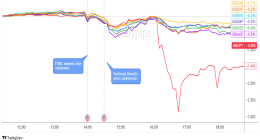Scientists have carefully collected spawn bundles by moonlight in a bid to help save the reef
It’s nearing 10pm, and Dr Kate Quigley is still waiting. Using red lights to minimise disruption to the animals’ behaviour, she is inspecting corals.
Quigley, who studies reef restoration at the Australian Institute of Marine Science, is looking for “little red dots all over the surface”. A pimply appearance is a hallmark sign that a coral is about to spawn, releasing sperm and eggs in bundles resembling small bubbles.



